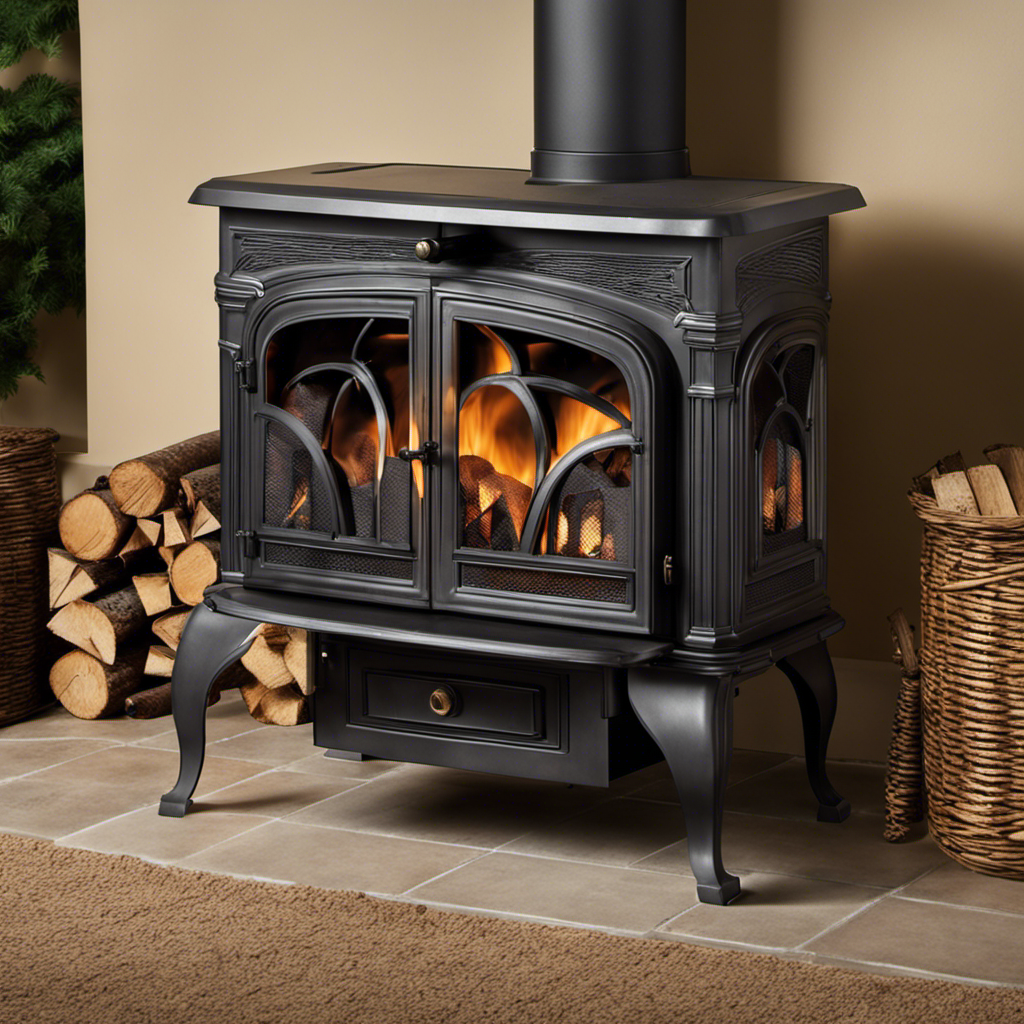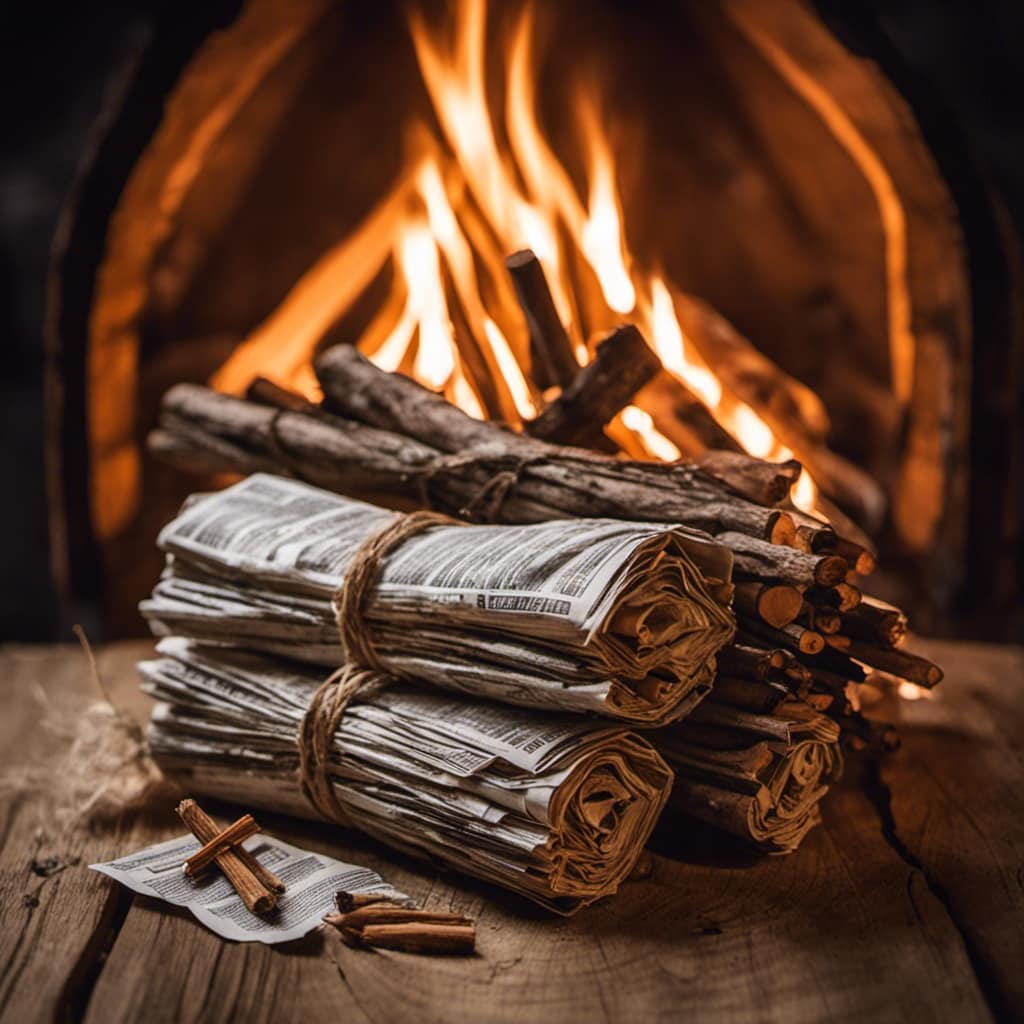
As a fan of wood stoves, I have always been fascinated by how this simple device can turn a cold house into a warm and inviting sanctuary.
Picture this: the crackling flames dance merrily in the stove, radiating warmth throughout the room.
But have you ever wondered how exactly a wood stove accomplishes this feat? In this article, we’ll delve into the fascinating world of wood stove heating, exploring the science behind combustion, the role of air circulation, and tips for maximizing heat output.
Get ready to unlock the secrets of efficient and effective home heating!
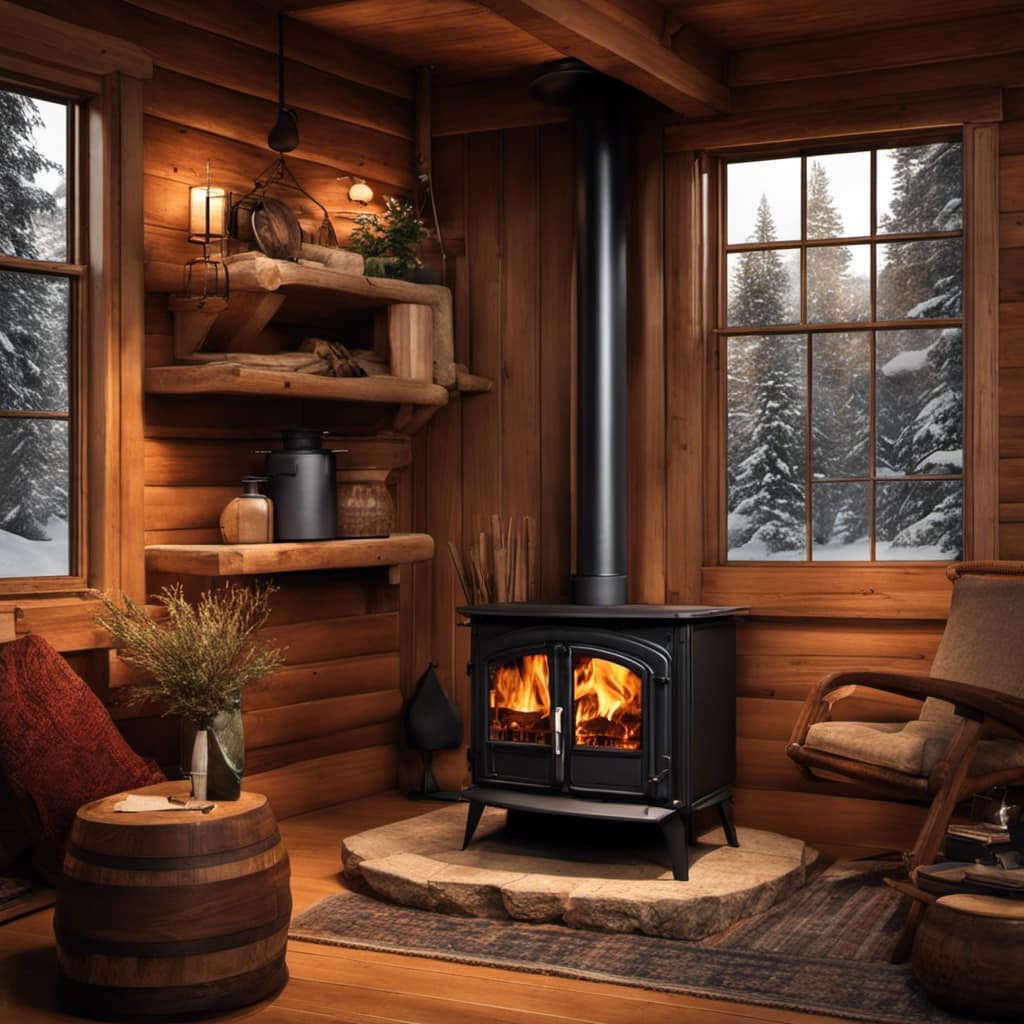
Key Takeaways
- Wood stove heating relies on the combustion process, which involves chemical reactions between wood molecules and oxygen.
- Heat production in a wood stove is primarily due to the combustion of wood, which releases heat energy, carbon dioxide, and water vapor.
- Heat is transferred to the surrounding air through conduction, convection, and radiation.
- Factors such as the type of wood used, proper airflow, and regular cleaning and maintenance affect the efficiency and safety of wood stove heating.
The Science of Combustion
I understand the science of combustion, and it’s fascinating how a wood stove can heat a house. The combustion process in a wood stove is a complex series of chemical reactions that release heat energy. When wood is burned, it undergoes a chemical reaction called combustion. This process involves the combination of wood molecules with oxygen from the air, resulting in the release of heat and the production of carbon dioxide and water vapor.
The heat production in a wood stove is primarily due to the combustion of the wood. As the wood burns, the energy stored in its chemical bonds is released in the form of heat. This heat is then transferred to the surrounding air through conduction, convection, and radiation. The hot air rises, creating a natural convection current that circulates the heat throughout the room.
To ensure efficient heat production, it’s important to maintain proper airflow in the wood stove. Sufficient oxygen supply is necessary for the combustion process to occur. A well-ventilated stove allows for optimal oxygen intake, resulting in a more efficient and effective heat output.
Understanding the science behind the combustion process and heat production in a wood stove allows us to appreciate the engineering that goes into designing these heating devices. By harnessing the power of combustion, wood stoves provide a reliable and sustainable source of heat for our homes.

Understanding Heat Transfer
Understanding heat transfer is crucial in comprehending how a wood stove effectively heats a house. Heat transfer occurs through conduction, radiation, and convection.
Conduction in Wood Stoves
When the fire is lit, the heat from the wood stove is transferred through conduction to the surrounding air and objects in the room. Conduction is the process by which heat is transferred through direct contact between particles or objects. In the case of a wood stove, heat is conducted from the burning wood to the metal walls of the stove. The metal then becomes hot and transfers the heat to the air and objects in the room. This process of heat conduction allows the wood stove to effectively heat a house. The rate at which heat is conducted depends on the thermal conductivity of the materials involved. The higher the thermal conductivity, the faster the heat is transferred. In the case of wood stoves, metals like cast iron or steel are commonly used due to their high thermal conductivity. This ensures efficient heat transfer and effective heating of the surrounding space.
To evoke emotion in the audience, consider the following:
-
Imagine the cozy warmth of a wood stove as it spreads through the room, enveloping you in comfort on a cold winter’s day.
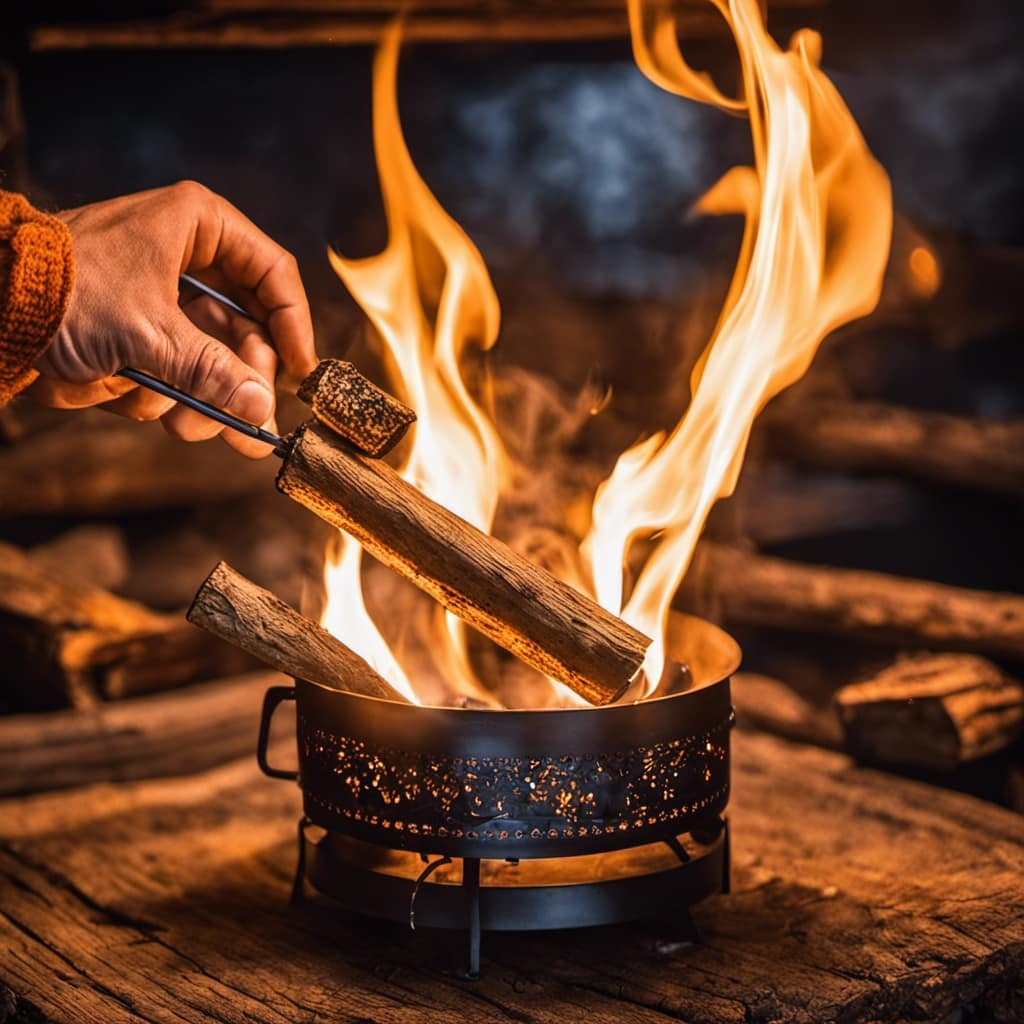
-
Picture the dancing flames in the stove, providing not just heat, but also a sense of relaxation and tranquility.
-
Feel the relief and satisfaction of knowing that your wood stove is efficiently heating your home, keeping you and your loved ones warm and cozy throughout the winter season.
Radiation From Wood Stoves
The warmth from the wood stove spreads throughout the room through radiation, heating the air and objects in its path. This method of heating is efficient and effective, but it is important to consider radiation safety and proper wood stove maintenance.
To ensure radiation safety, it is crucial to keep a safe distance from the wood stove. The table below provides some guidelines for maintaining a safe distance from the stove:

| Distance from Stove | Recommended Safety Zone |
|---|---|
| Less than 1 foot | High risk of burns |
| 1-3 feet | Caution advised |
| 3-6 feet | Safe distance |
| 6-10 feet | Ideal distance |
| More than 10 feet | Reduced heating effect |
In addition to radiation safety, proper wood stove maintenance is essential for efficient heating and safety. Regular cleaning of the stove and chimney helps prevent the buildup of creosote, which can lead to chimney fires. It is also important to inspect and replace any damaged parts to ensure the stove’s optimal performance.
Convection in Heating
I find it fascinating how warm air rises and circulates throughout my home, creating a cozy and comfortable environment. This phenomenon is due to heat convection, which plays a crucial role in heating our houses.
Here are three reasons why convection is essential for efficient heating:
-
Enhanced heat distribution: Convection currents help distribute heat evenly by carrying warm air from the wood stove to different parts of the house. This ensures that every corner receives a sufficient amount of warmth, making the entire space comfortable to live in.
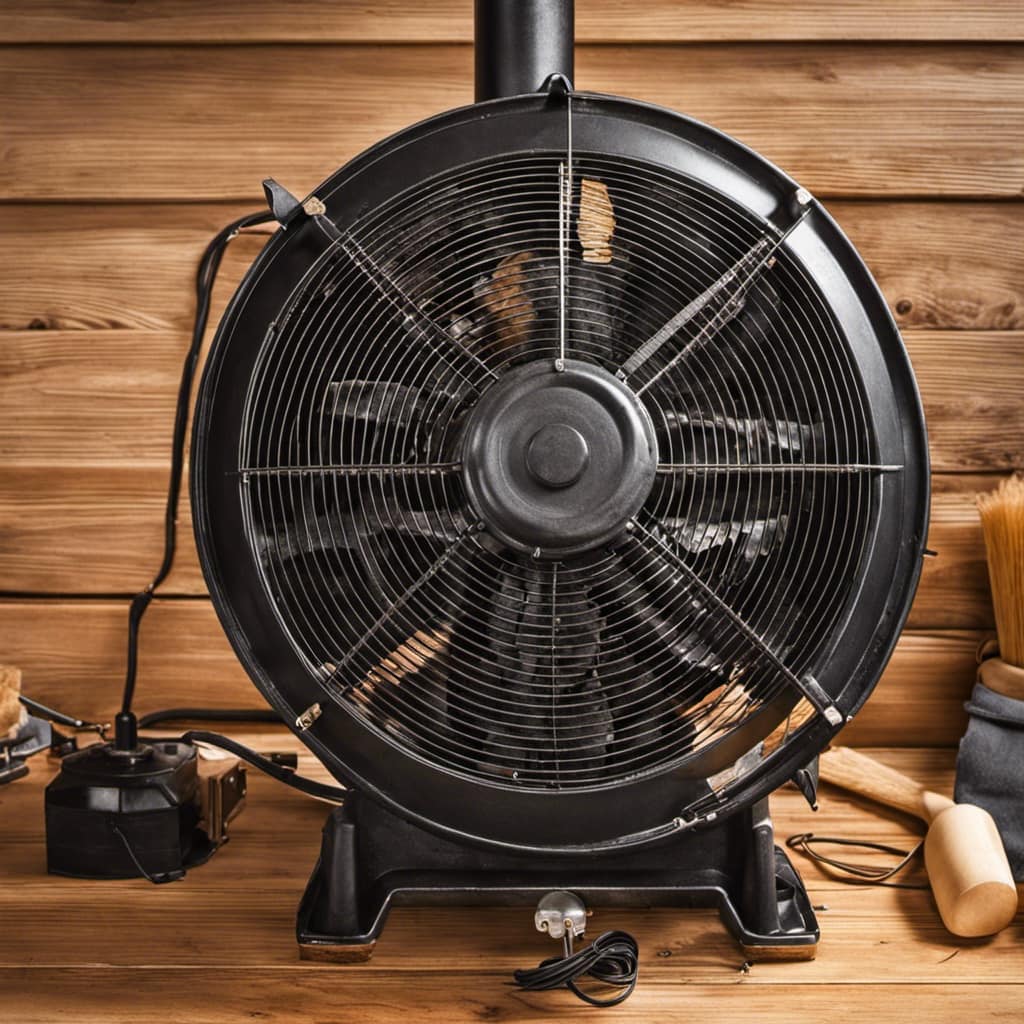
-
Improved air quality: Convection currents promote the movement of air, preventing stagnant pockets of cold or stale air. This constant circulation helps maintain good indoor air quality by reducing the buildup of dust, allergens, and other pollutants.
-
Energy efficiency: Since warm air naturally rises, convection allows for efficient heat transfer. As the warm air moves upward, it displaces the cooler air, creating a continuous cycle of heat transfer. This reduces the need for additional heating sources, ultimately saving energy and reducing utility bills.
Understanding the role of heat convection and convection currents in heating our homes sheds light on how to optimize our heating systems for maximum comfort and efficiency.
Fuel Types for Wood Stoves
Using different types of wood as fuel in my wood stove can affect how efficiently it heats my house. Fuel efficiency is an important aspect to consider when choosing the right wood for my stove. Some types of wood burn more efficiently than others, meaning they produce more heat with less waste. Hardwoods, such as oak or maple, are known for their high fuel efficiency. They burn slowly and provide a steady heat output, keeping my house warm for longer periods of time. On the other hand, softwoods like pine or spruce burn faster and produce less heat. While they may be cheaper and easier to find, they require more frequent refueling and can lead to higher heating costs in the long run.
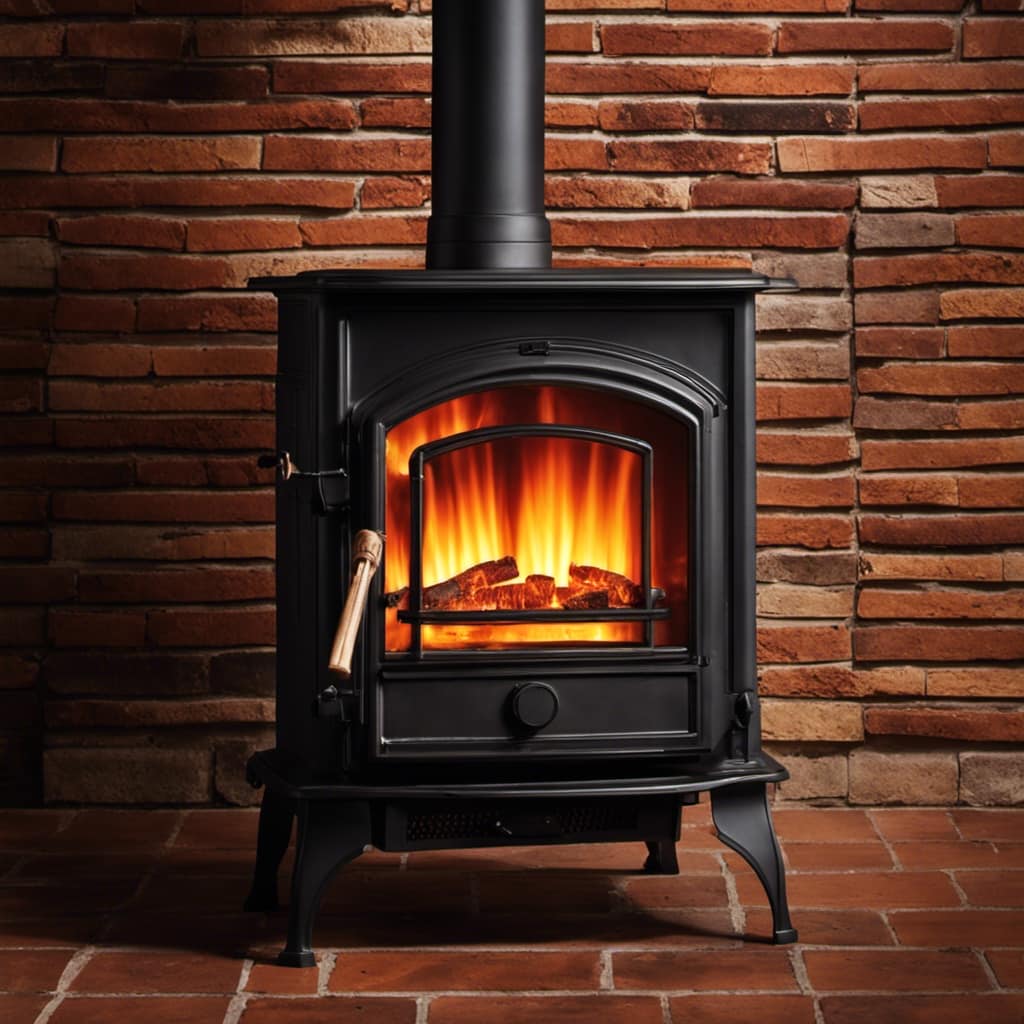
In addition to fuel efficiency, the environmental impact of the wood I choose is also a factor to consider. Using sustainably sourced wood or wood pellets is a more eco-friendly option. These fuels are made from renewable resources and emit fewer pollutants when burned. They help reduce carbon emissions and contribute to a healthier environment. On the contrary, using wood from illegal logging or non-renewable sources can have a negative impact on forests and wildlife habitats. It’s important to be mindful of the wood I use and choose a fuel that not only heats my house efficiently but also minimizes harm to the environment.
How Air Circulation Affects Heating Efficiency
When it comes to heating efficiency, air circulation plays a crucial role. As someone who’s spent years studying heating systems, I can confidently say that proper air circulation can greatly benefit your heating efficiency. Here are three important tips to consider:
-
Improved heat distribution: By ensuring proper air circulation, you can evenly distribute the heat throughout your home. This means no more cold spots or uneven temperatures. Imagine stepping into a cozy living room where every corner is warm and inviting. That’s the power of good air circulation.
-
Reduced energy consumption: When the air in your home circulates effectively, your heating system doesn’t have to work as hard. This translates to lower energy consumption, saving you money on your heating bills. It’s a win-win situation for both your wallet and the environment.
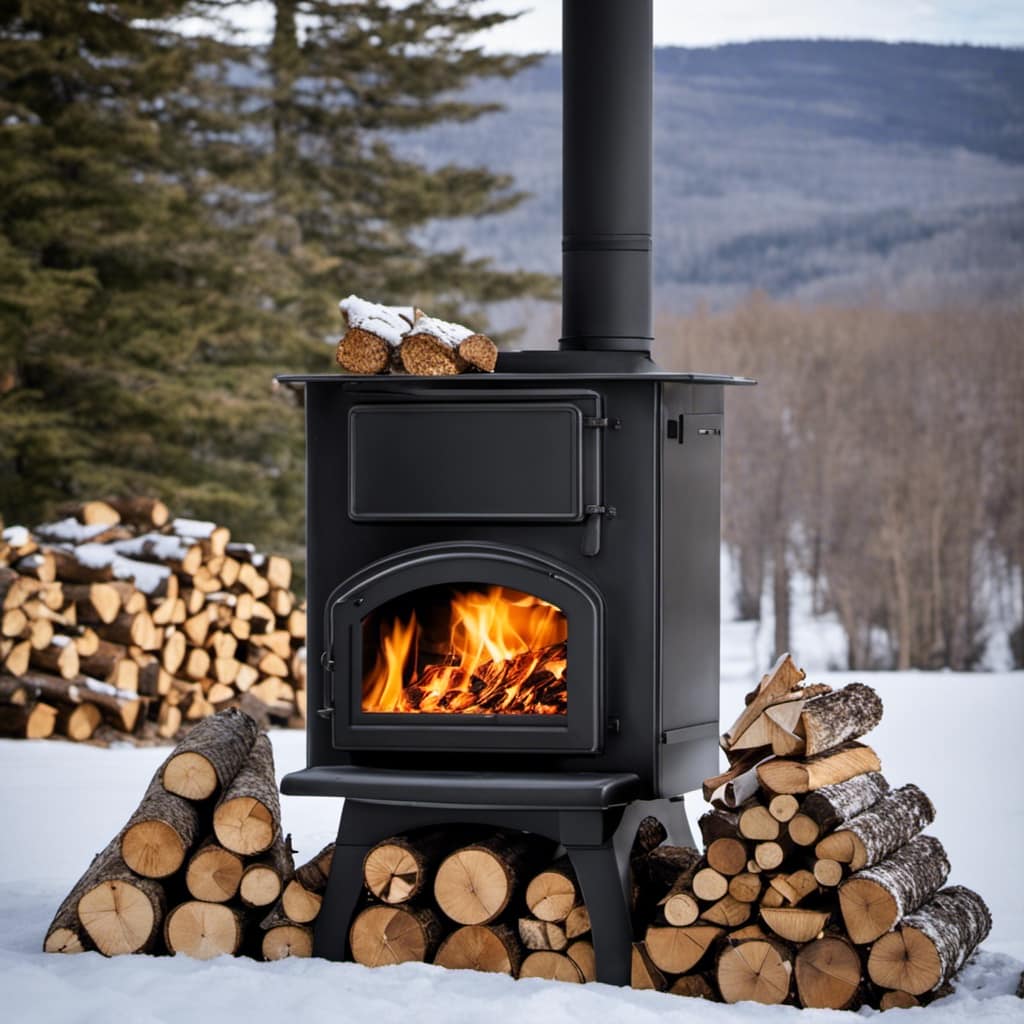
-
Enhanced indoor air quality: Adequate air circulation helps remove pollutants, allergens, and odors from your home. It promotes better ventilation, preventing the buildup of stale air and improving the overall quality of the air you breathe. This is especially important for those with respiratory conditions or allergies.
The Role of the Chimney in Heat Distribution
The chimney plays a crucial role in the distribution of heat within a house.
As the hot air rises from the wood stove or fireplace, it’s directed up the chimney, creating a natural flow of air.
This circulation helps to evenly distribute the heat throughout the different rooms, ensuring a comfortable and consistent temperature throughout the space.
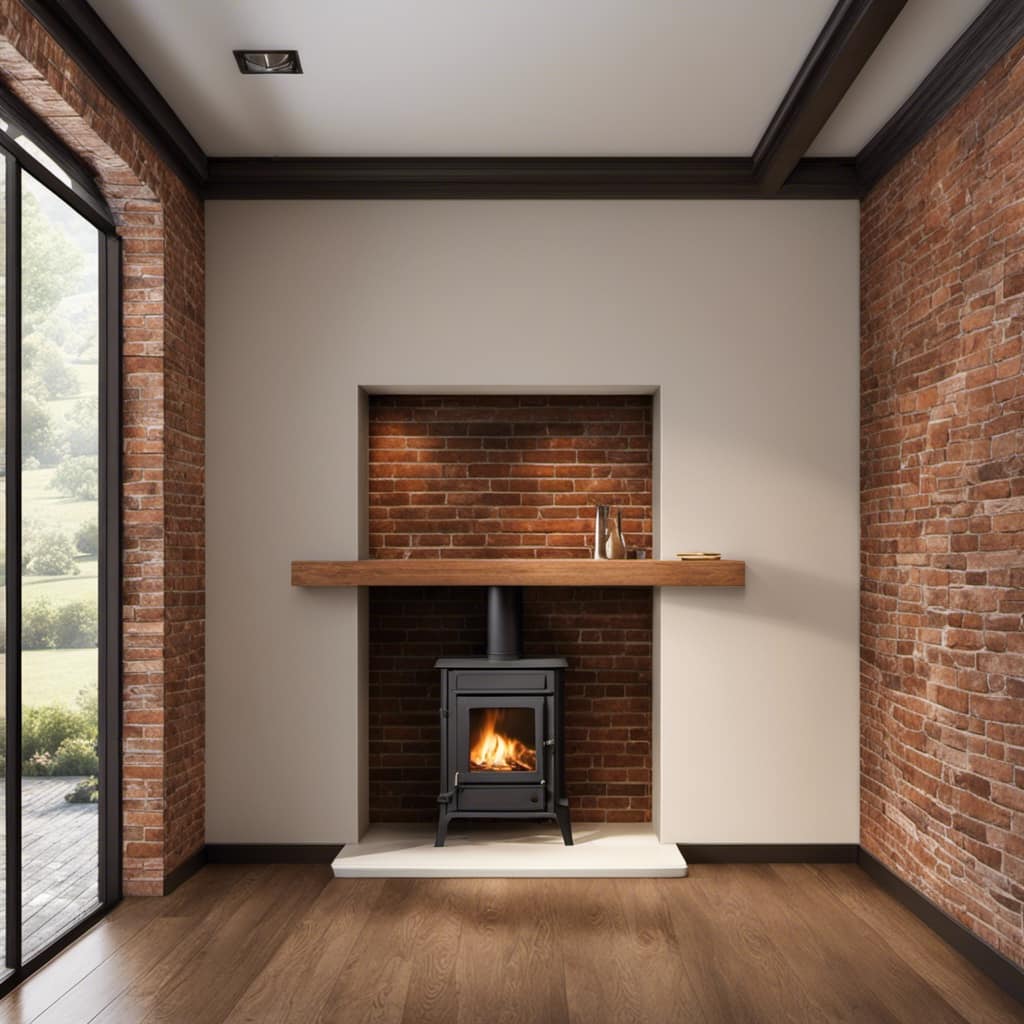
Chimney’s Heat Circulation
I can feel the warmth from the wood stove’s chimney circulating throughout the house. It’s a comforting sensation, knowing that the heat is being efficiently distributed.
Here are three reasons why the chimney’s heat circulation is so essential:
-
Chimney Draft: The chimney creates a draft that draws in fresh air from outside and pushes out the stale air and smoke from the wood stove. This ensures proper combustion and efficient heat production.
-
Heat Conduction: As the smoke travels up the chimney, it warms the bricks or metal flue. This heat is then conducted into the surrounding air, warming up the entire house.
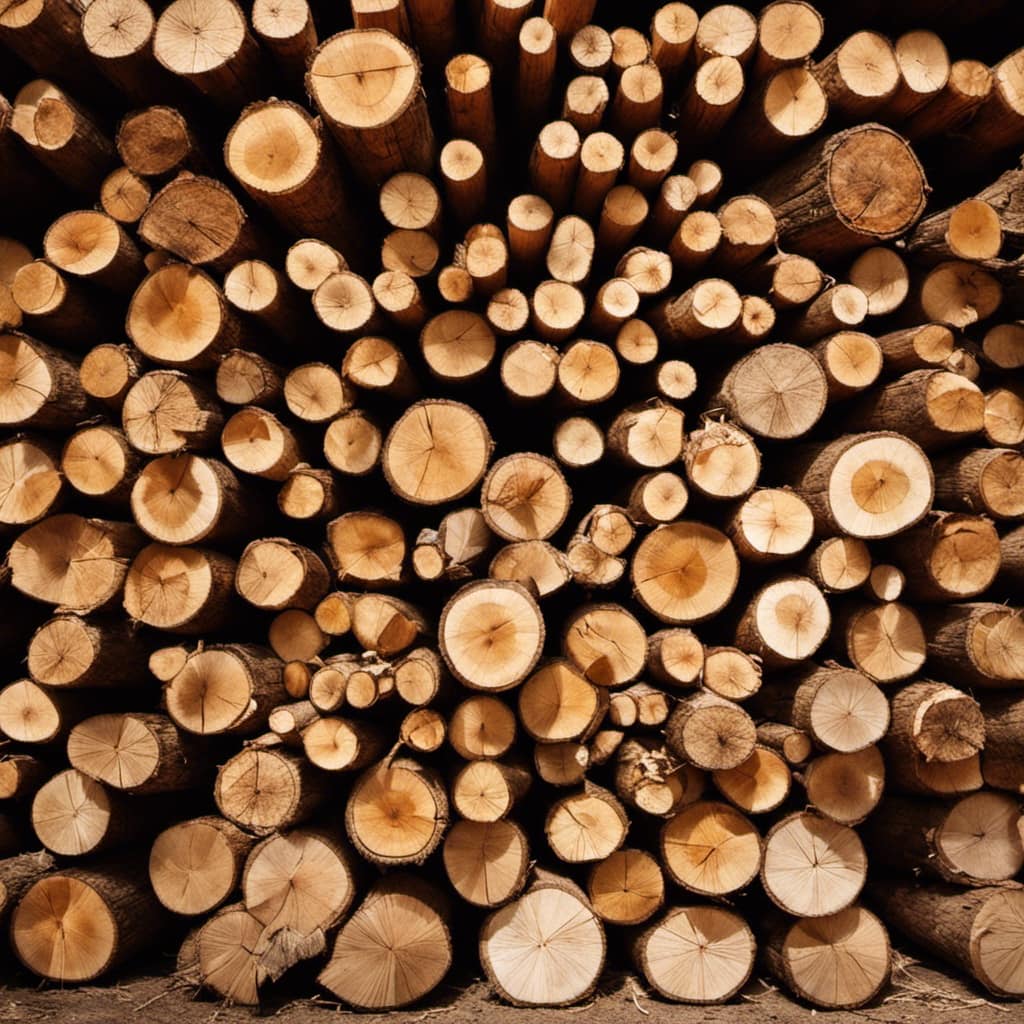
-
Even Distribution: The chimney’s design allows the heat to be evenly distributed throughout the house, reaching every room and corner. This ensures that no area is left cold and maximizes the stove’s heating potential.
Understanding the chimney’s role in heat circulation is crucial for optimizing the wood stove’s efficiency and keeping our homes warm and cozy.
Importance of Chimney
As a homeowner, I understand the importance of a well-functioning chimney for efficient heat distribution. A chimney plays a crucial role in the proper functioning of a wood stove or fireplace. It not only helps in the release of harmful gases but also ensures that the heat is distributed evenly throughout the house.
One key aspect of chimney maintenance is the importance of insulation. Insulating your chimney helps to prevent heat loss, ensuring that the warmth generated by your wood stove is retained inside your home. Insulation also helps to prevent condensation and the buildup of creosote, which can be a fire hazard.
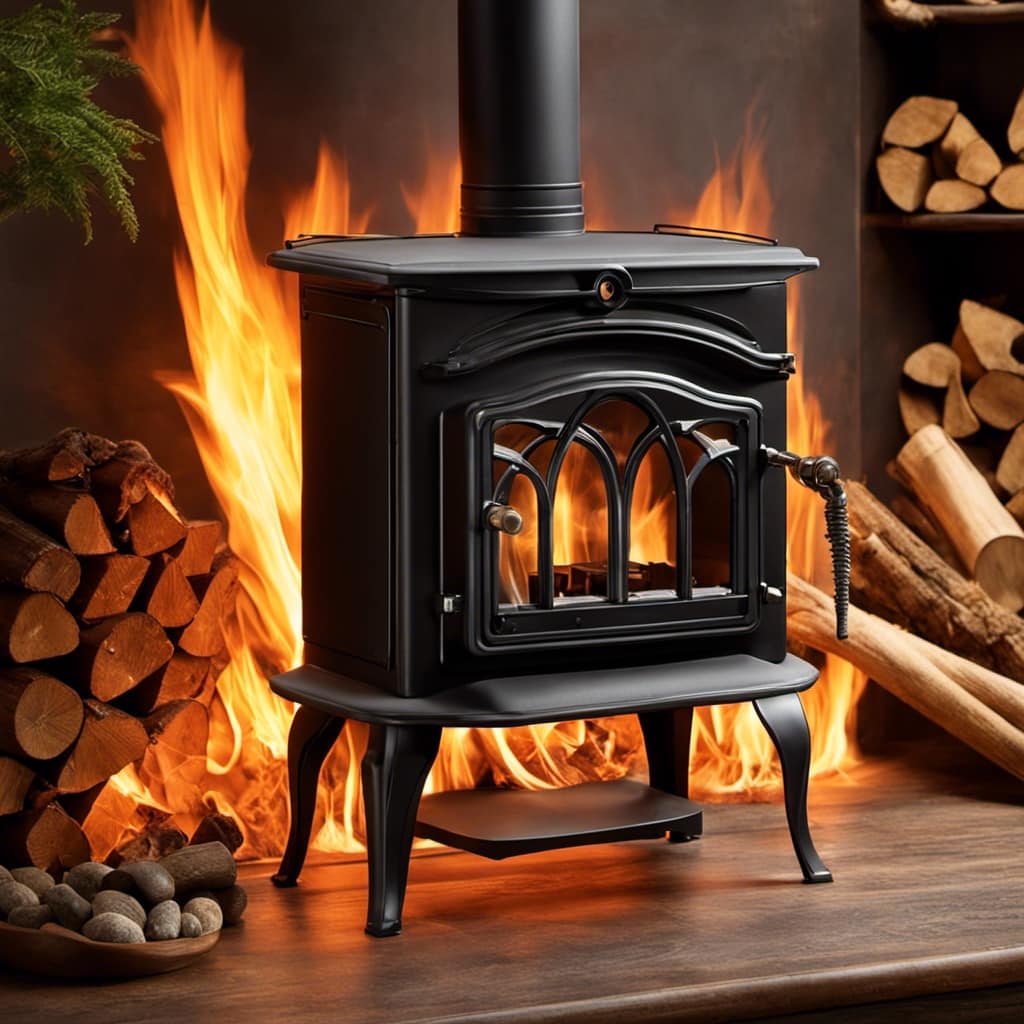
Regular chimney maintenance, including cleaning and inspection, is essential to ensure that the chimney is functioning optimally and to identify any potential issues before they become bigger problems.
Chimney and Heat Distribution
Insulating my chimney ensures that the warmth from my wood stove stays inside my home and is distributed evenly. Proper chimney maintenance is crucial for maximizing heat distribution efficiency. Here are three reasons why:
-
Reduced heat loss: Insulating the chimney prevents heat from escaping through the walls, ensuring that it stays inside the house. This means more warmth for me and my family, especially during cold winter nights.
-
Improved energy efficiency: A well-insulated chimney allows the wood stove to operate at its optimal efficiency. This means that less fuel is needed to generate the same amount of heat, saving both money and resources.
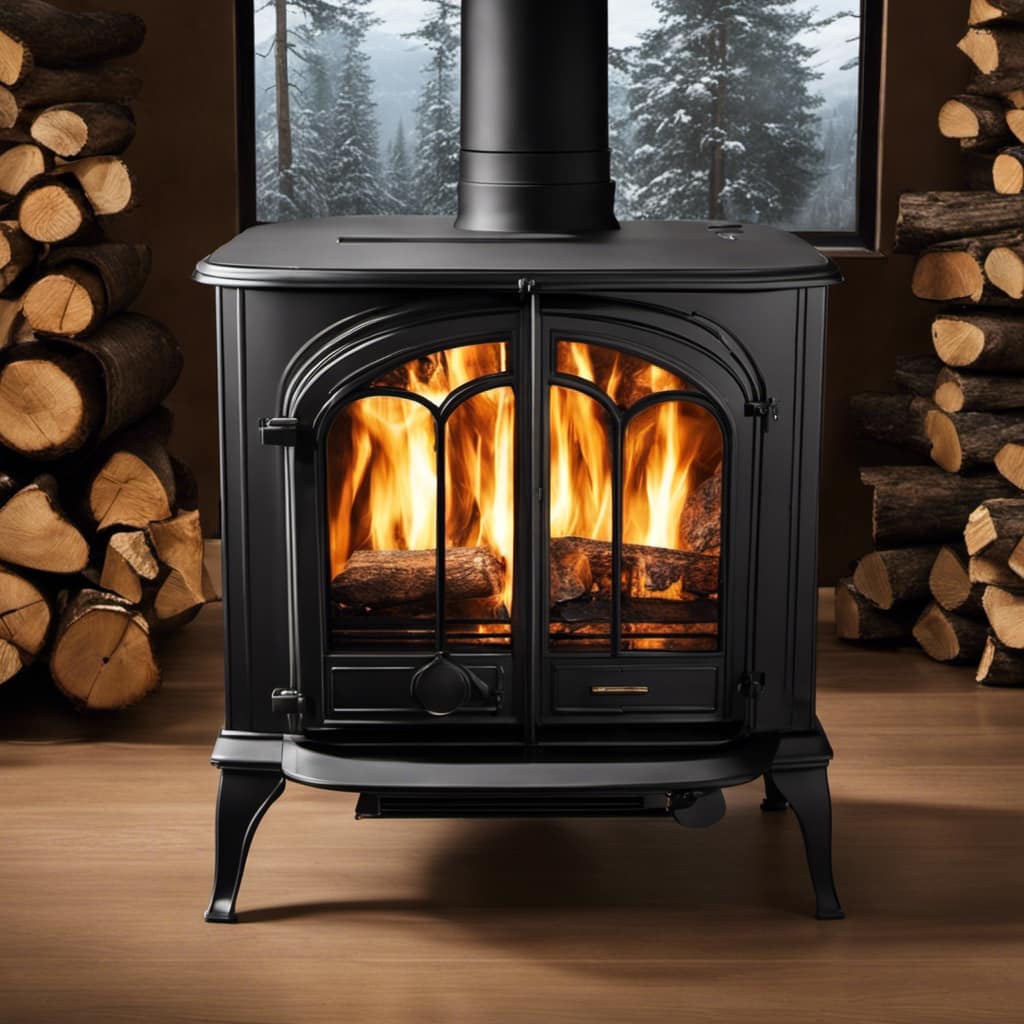
-
Enhanced comfort: With an insulated chimney, the heat distribution throughout the house becomes more consistent. No more cold spots or drafty areas, just a cozy and comfortable living space.
Maximizing Heat Output With Proper Stove Design
With a proper stove design, you can maximize the heat output of a wood stove. One of the key factors in maximizing efficiency is heat retention. An efficient stove design will ensure that the heat produced by the burning wood isn’t wasted and is instead used to heat your home effectively.
To achieve maximum heat output, a wood stove should have the following design features:
-
Insulated Firebox: An insulated firebox helps to retain heat within the stove, allowing it to burn at a higher temperature and produce more heat.
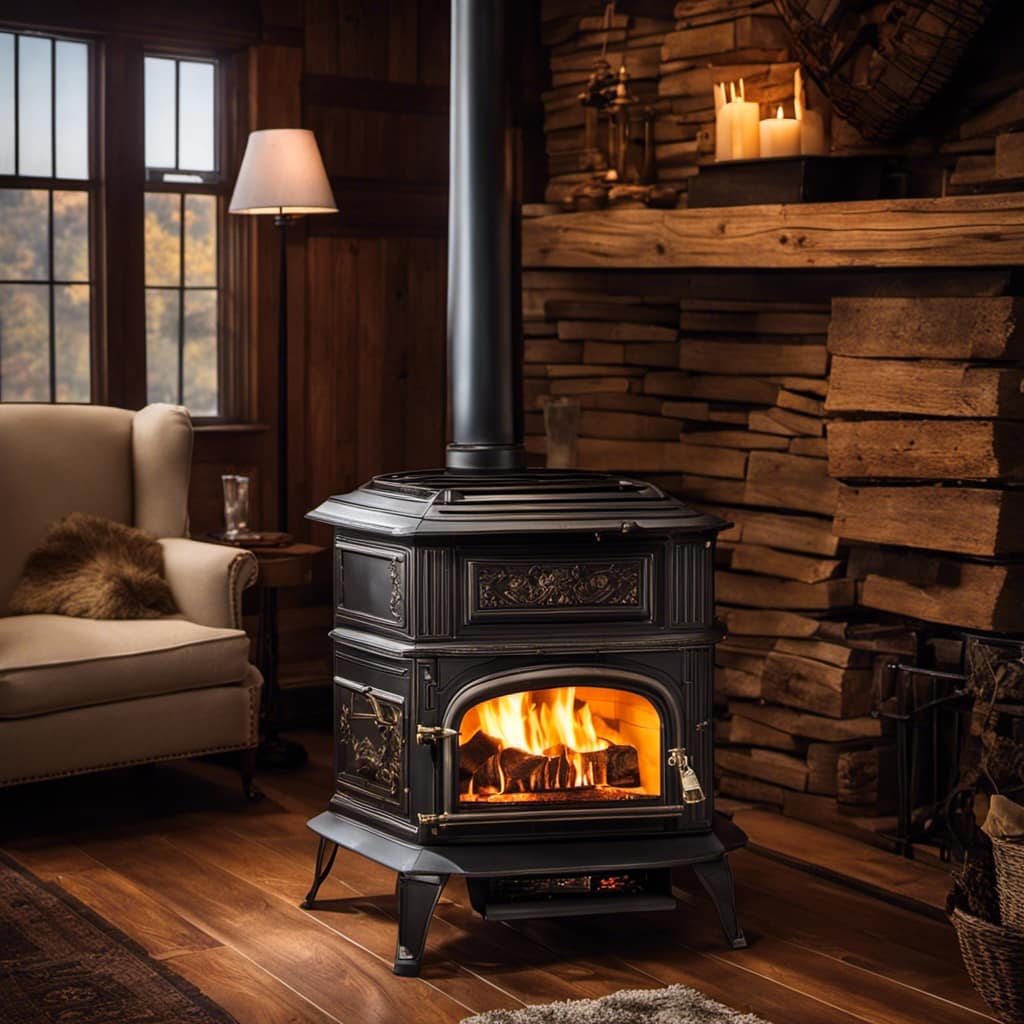
-
Air Control: A well-designed air control system allows for efficient combustion by regulating the amount of oxygen supplied to the fire. This helps to ensure complete combustion of the wood, resulting in maximum heat output.
-
Heat Exchange System: A heat exchange system, often in the form of pipes or channels, allows for the transfer of heat from the stove to the surrounding air. This helps to distribute the heat evenly throughout your home.
Controlling Temperature With Dampers and Air Vents
I can control the temperature in my home by adjusting the dampers and air vents on my wood-burning stove. It’s a simple and effective way to maintain a comfortable environment while enjoying the warmth and ambiance of a wood fire. Here are three key reasons why this temperature control method is so beneficial:
-
Precision: By adjusting the dampers and air vents, I’ve precise control over the amount of air flowing into the stove. More airflow means a hotter fire, while less airflow results in a slower, cooler burn. This level of control allows me to tailor the temperature to my exact preference.

-
Efficiency: Properly adjusting the dampers and air vents ensures efficient combustion. When the airflow is optimized, the wood burns more completely, maximizing heat output and reducing fuel consumption. This not only saves money but also minimizes the impact on the environment.
-
Safety: Maintaining the right temperature is crucial for safety. By controlling the airflow, I can prevent the stove from overheating, reducing the risk of damage or fire hazards. Additionally, regulating the temperature helps prevent the buildup of harmful gases, such as carbon monoxide.
Heating Large Spaces: Tips and Tricks
When heating large spaces, it’s important to consider the layout and airflow of the room to ensure even distribution of warmth. To achieve energy efficiency, there are several tips and tricks that can be followed.
One option is to use a programmable thermostat, which allows you to set specific temperature levels for different times of the day. This ensures that the heater isn’t running unnecessarily and helps to conserve energy.
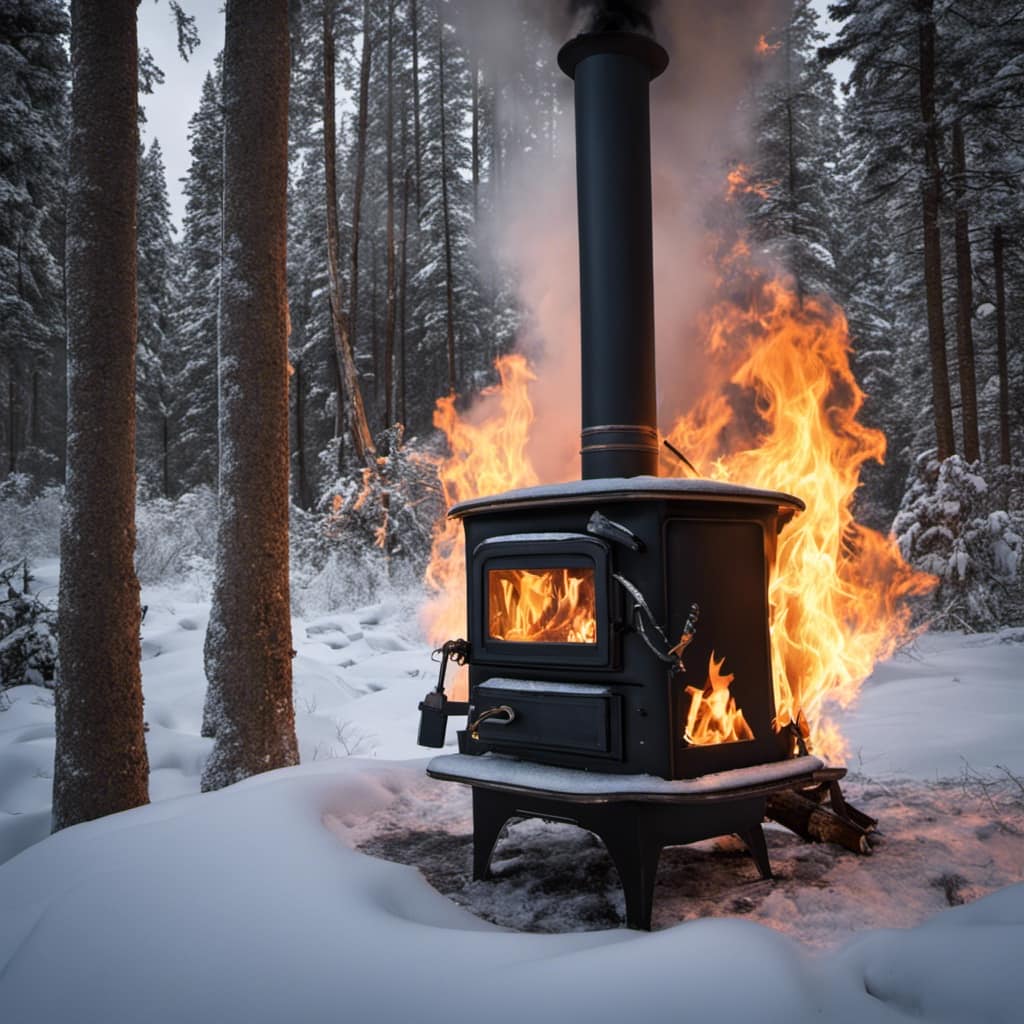
Another tip is to make use of natural sunlight by keeping curtains and blinds open during the day. This allows the sun’s rays to naturally heat the space, reducing the need for artificial heating.
Additionally, proper insulation is crucial for energy efficient heating. Insulating walls, floors, and ceilings helps to trap the heat inside the room, preventing it from escaping and keeping the space warm for longer periods.
When it comes to alternative heating options, there are a few to consider. Electric heaters are a popular choice as they’re energy efficient and can be easily controlled. They also come in various sizes and styles to suit different room sizes and aesthetics.
Another option is a pellet stove, which burns wood pellets for heat. These stoves are highly efficient and produce minimal emissions, making them an environmentally friendly choice.
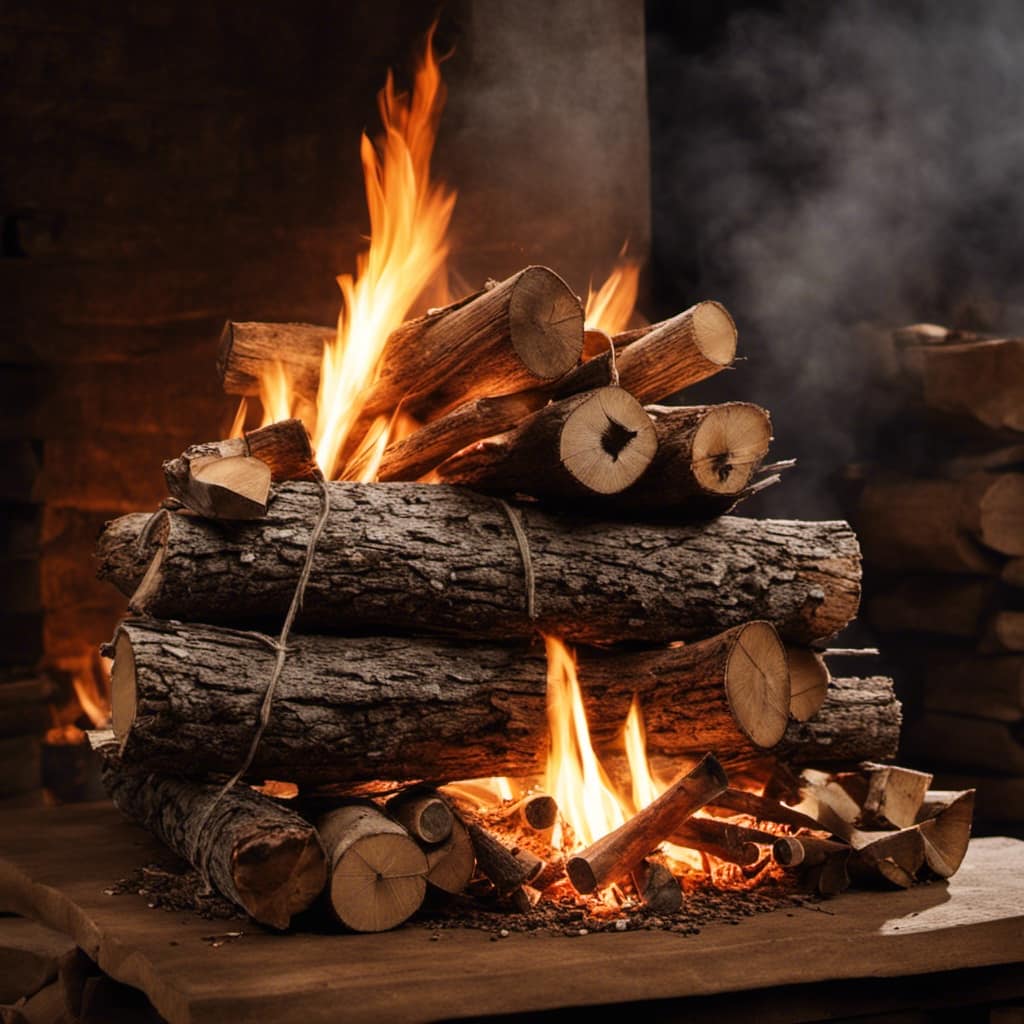
Maintaining and Cleaning Your Wood Stove for Optimal Performance
To keep my wood stove performing at its best, regular maintenance and cleaning are necessary. Here are three essential cleaning techniques and troubleshooting tips to ensure optimal performance:
-
Clean the Ashes: Regularly remove the ashes from the firebox to prevent the accumulation of debris. Use a shovel or ash vacuum to safely remove the ashes. This not only improves the stove’s efficiency but also reduces the risk of fire hazards.
-
Clear the Chimney: Over time, creosote can build up in the chimney, obstructing airflow and increasing the risk of chimney fires. Schedule an annual chimney cleaning to remove the creosote and ensure proper ventilation. Additionally, inspect the chimney cap and flue for any blockages or damage.
-
Check the Door Gasket: A worn-out or damaged door gasket can cause air leaks, reducing the stove’s efficiency. Regularly inspect the gasket for any signs of wear and tear. If necessary, replace it to maintain a proper seal.
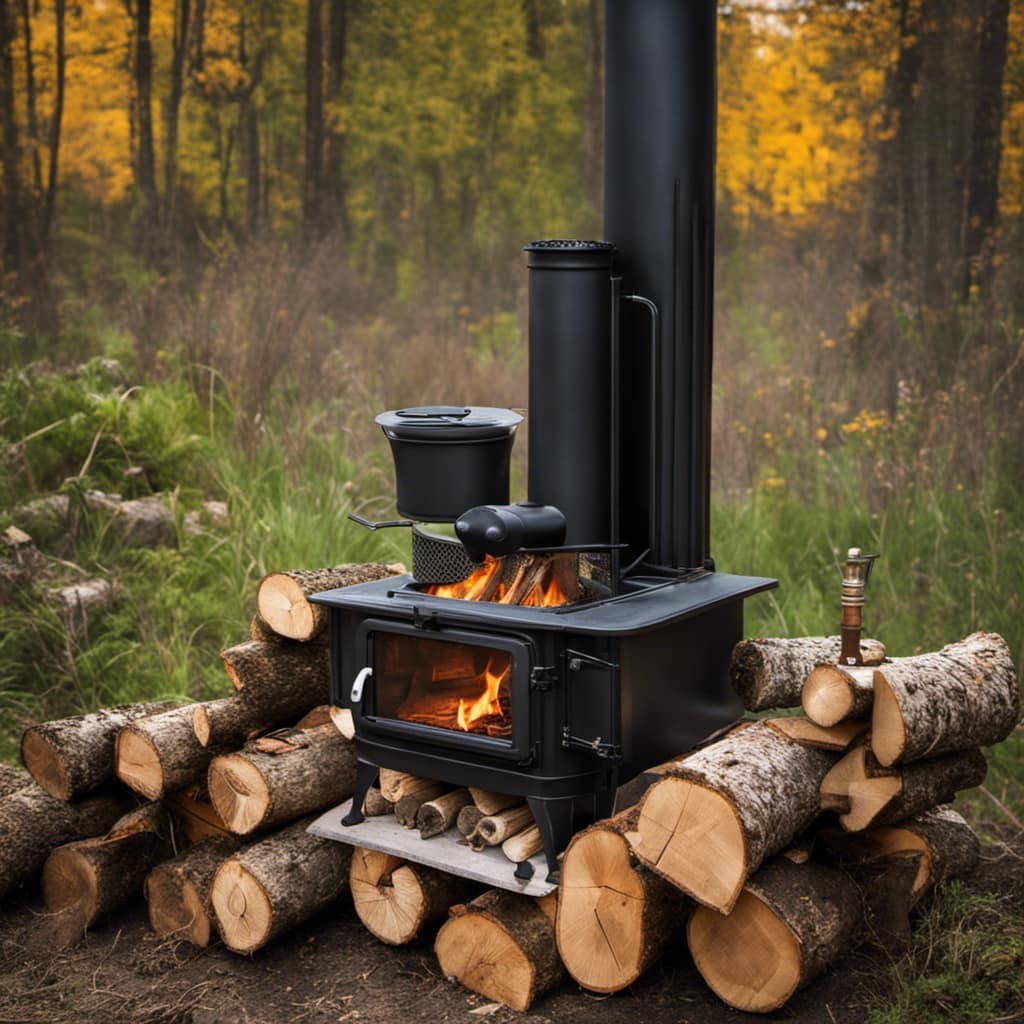
If you encounter common issues like difficulty in starting a fire, excessive smoke, or uneven heating, troubleshooting may be required. Check for blockages in the flue, ensure proper air intake, and adjust the damper accordingly. Additionally, consider having a professional perform an annual inspection to identify and address any potential issues early on.
Frequently Asked Questions
How Much Does It Cost to Install a Wood Stove in a House?
Installing a wood stove in a house involves several cost factors and a specific installation process. Factors like the type of wood stove, materials required, and labor costs can affect the overall expense.
The installation process typically involves inspecting the space, preparing the area, installing the stove, and ensuring proper ventilation and safety measures.
It’s important to consult with professionals to get an accurate estimate of the installation cost and to ensure a safe and efficient wood stove installation.
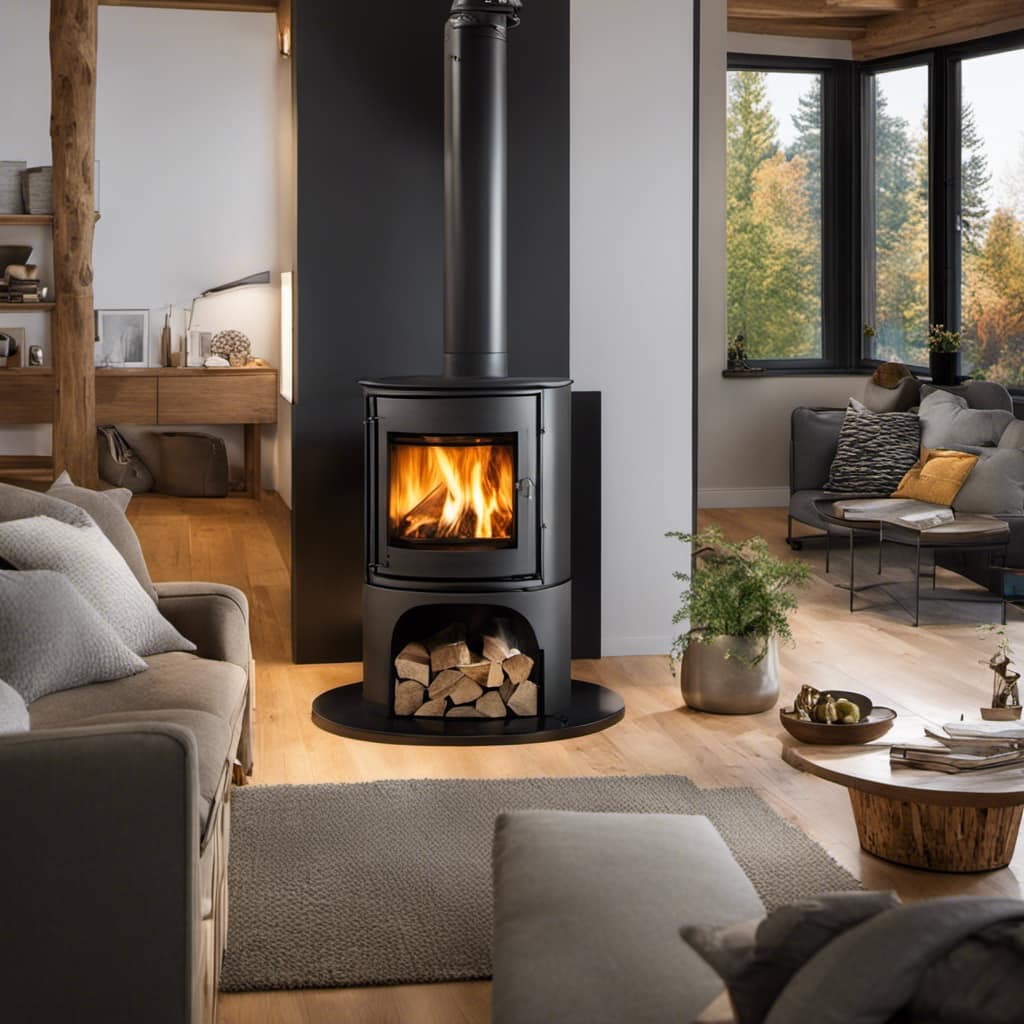
Can a Wood Stove Be Used as the Primary Heating Source for a Whole House?
Yes, a wood stove can be used as the primary heating source for a whole house. Wood stoves have been used for centuries to warm homes efficiently and effectively. They work by burning wood, which produces heat that’s then distributed throughout the house.
Wood stove efficiency has improved over the years, making them a viable alternative to traditional heating systems. However, it’s important to consider other heating options as well, depending on factors such as climate and insulation.
Are There Any Safety Concerns When Using a Wood Stove to Heat a House?
Safety precautions and proper maintenance are crucial when using a wood stove to heat a house. It’s important to have a carbon monoxide detector installed near the stove and to ensure proper ventilation. Regularly cleaning the stovepipe and chimney can prevent dangerous build-up.
It’s also essential to use dry, seasoned firewood and to never leave the stove unattended. Following these precautions and maintaining the stove properly will help ensure safe and efficient heating for your home.
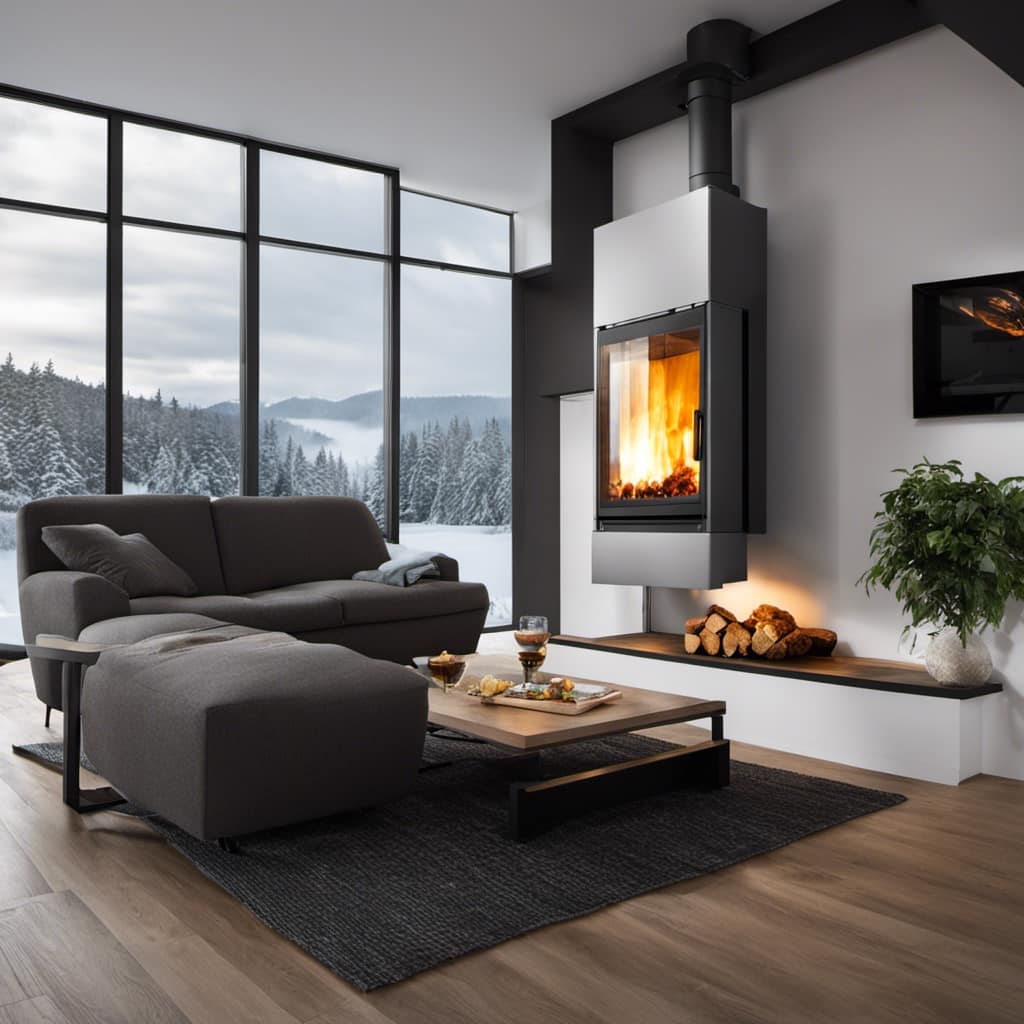
How Often Should the Wood in a Wood Stove Be Replenished for Optimal Heating?
When it comes to keeping my home cozy, nothing compares to the warmth of a wood stove.
You might be wondering how often to replenish the wood for optimal heating.
Well, the frequency depends on the efficiency of your wood stove.
High-efficiency stoves require less frequent replenishment, while older models may need more wood to maintain a consistent heat.
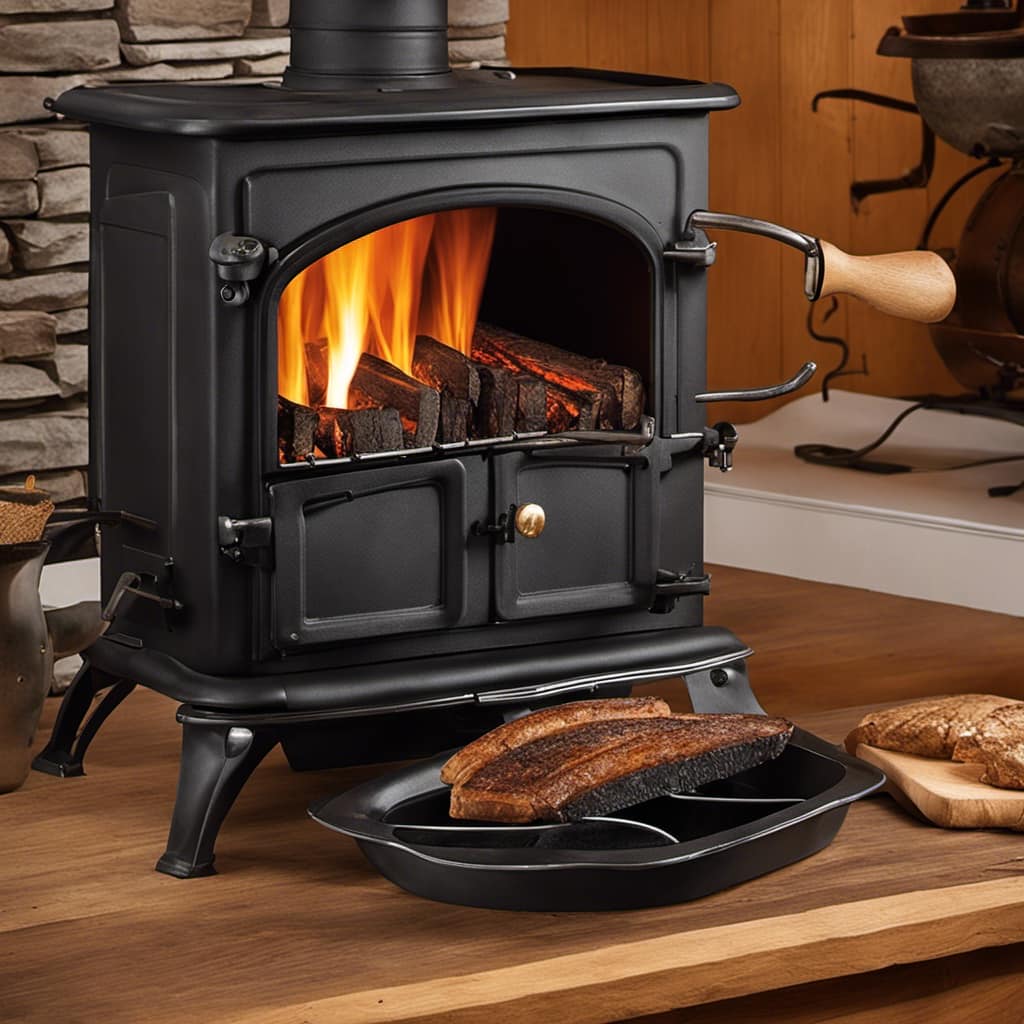
It’s important to monitor the fire and add wood as needed to keep the flames dancing and your house toasty.
Can a Wood Stove Be Used in Areas With Strict Air Quality Regulations?
Yes, a wood stove can be used in areas with strict air quality regulations.
However, it’s important to note that wood stoves can contribute to air pollution if not used properly.
To comply with regulations, it’s recommended to use an EPA-certified wood stove, which burns wood more efficiently and produces less smoke.

Additionally, there are alternative heating options available, such as pellet stoves or gas fireplaces, that provide warmth while emitting fewer pollutants into the air.
Conclusion
In conclusion, a wood stove is a highly efficient and effective way to heat a house. By harnessing the science of combustion and understanding heat transfer, it can provide warmth and comfort in the coldest of winters.
With the right fuel, proper stove design, and proper maintenance, a wood stove can maximize heat output and distribute it evenly throughout the house.
So, if you’re looking for a reliable and sustainable heating solution, consider investing in a wood stove.
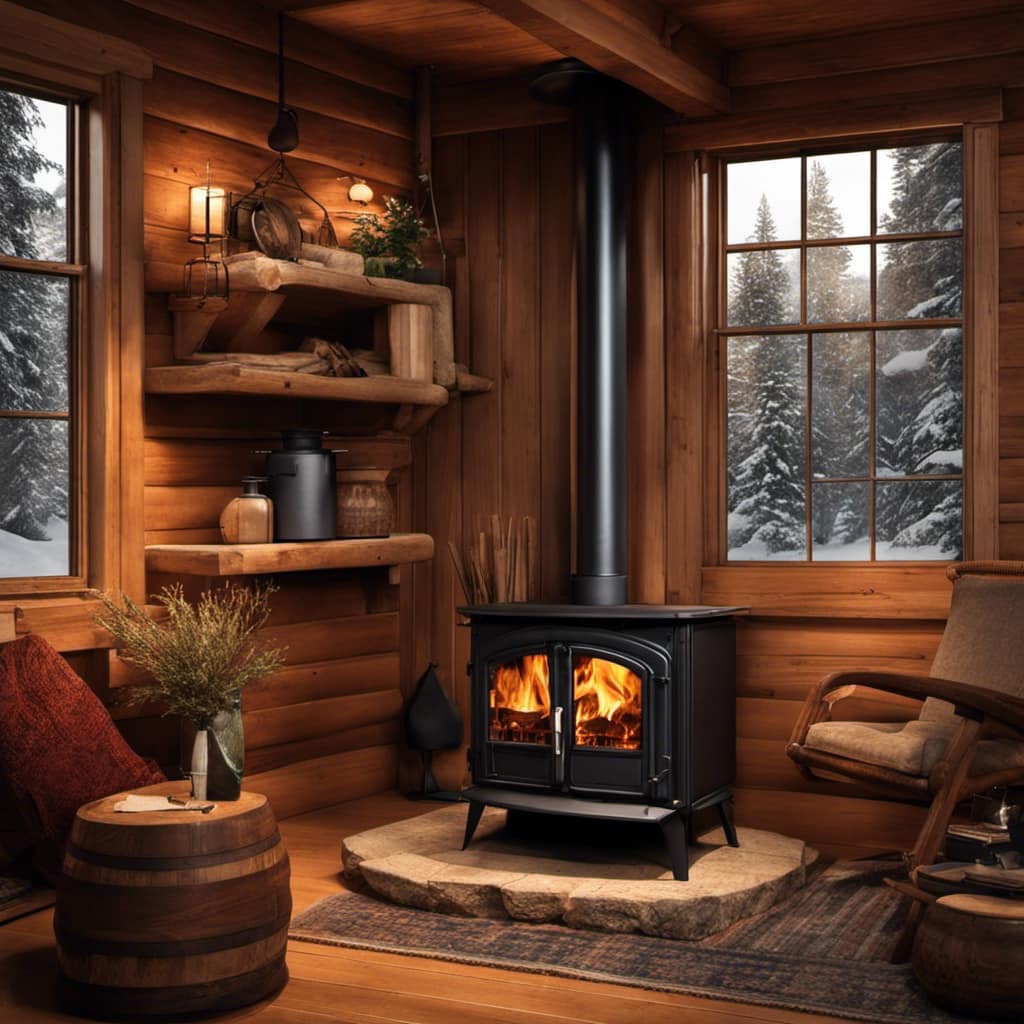
Growing up surrounded by the vast beauty of nature, Sierra was always drawn to the call of the wild. While others sought the comfort of the familiar, she ventured out, embracing the unpredictable and finding stories in the heartbeat of nature.
At the epicenter of every remarkable venture lies a dynamic team—a fusion of diverse talents, visions, and passions. The essence of Best Small Wood Stoves is crafted and refined by such a trio: Sierra, Logan, and Terra. Their collective expertise has transformed the platform into a leading authority on small wood stoves, radiating warmth and knowledge in equal measure.





